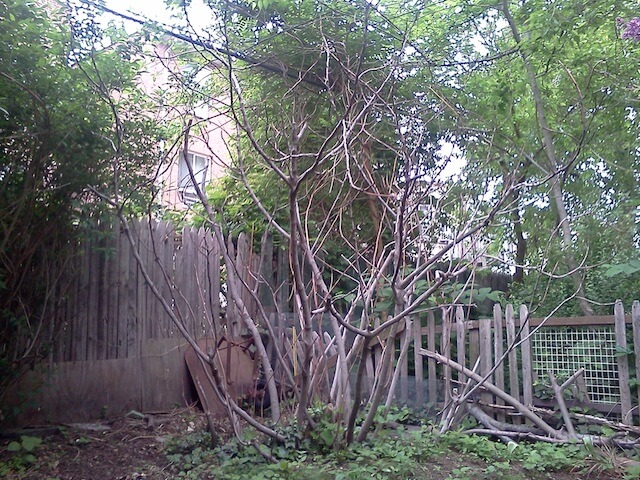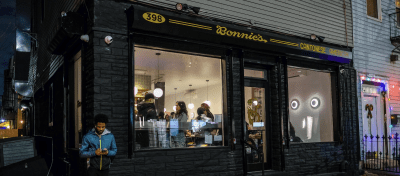Have All the Fig Trees in Brooklyn Died?

One sorry-looking late-May fig tree
It’s May, the end of May, the end of a long rainy May, and by my fig tree you’d think it was February: its limbs are barren and leafless and, above all, figless. Not even a trace of the nubbins that will become the fruit. Thing is, it’s not just my tree. A few neighborhoods east, my colleague Sarah Zorn reports that her fig tree has yet to sprout leaves. “The fig trees are really such an important part of Southern Brooklyn’s Italian history,” she tells me. “And honestly, the single reason I moved into my apartment… For at least a few weeks out of the year, having access to that glorious, fruiting tree has been every bit as romantic and transportive as I had hoped.”
She’s not alone. The fig tree has a long, proud history in this borough. As Melissa Clark once wrote in the Times:
Planting [a fig] tree was my Italian-American mother-in-law’s idea. When I moved into the brownstone in 1997, she regaled me with stories of fig trees all over Brooklyn. Potted fig trees thriving on patios in Park Slope. Fig trees tucked in postage-stamp yards in Dyker Heights. Fig trees spreading out regally in gardens in Bay Ridge. They were especially abundant in Carroll Gardens, where everyone with a spare foot of soil grew a lush tree that bore enough fruit to share with friends and relatives.
The thing is, fig trees can only survive “moderate” winters, and this last one was anything but. With its polar vortexes and record snowfalls, it was one of the worst winters on record.
“We’re already among the top snowiest seasons in Central Park, and this month is the second snowiest February on record,” WNBC Meteorologist Raphael Miranda told Newsweek [in February]. “We’re breaking all sorts of records and making all sorts of lists.”
Was it just too much for the fig trees? Or will they bounce back, if not late this season then next year? Some people have reported the stirrings of buds, hoping that because of the cold the trees are just tardy. We contacted Nelson Ryland of the Flatbush Fig Farm to see what the borough’s expert thinks.
All the fig owners in Brooklyn that I know are licking their wounds this spring. This was the worst winter in at least a decade for fig trees—especially for those, like me, that don’t wrap their trees. (I’ve written blog posts about how wrapping is for the slightly paranoid and more or less a big waste of time in our zone. But now I’m eating my words. All those Italian-American diehards that wrap their trees were right!)
“I heard even people that wrapped their trees have experienced the same thing,” says Zorn, who like me does not wrap her tree. Ryland continues:
We have a fig business that is supposed to be a fun family business for me and my sons. We had hoped to sell around 100 fig cuttings at Stems Flower Shop in Ditmas Park this Spring and do some fundraisers for the Flatbush Community Garden as well. This year 80-90 percent of our cuttings didn’t grow at all because of an early freeze before we took the cuttings indoors. The ones that did were unremarkable, and I only produced 10 sellable cuttings.
But with all that said, my 90+ year-old tree survived, and I’d be surprised if yours is really dead. Granted, many branches of mine are dead. Check yours carefully. One way to tell is to hose it down and see what color it is. If it’s orange-ish that usually means dead wood. If its green then its probably alive and just now coming out of dormancy. This weekend mine is finally producing tiny leaves and some branches just now have tick sized new buds poking out of the living wood.
Of many of my smaller trees that I left outside—I have about 15—all the wood above ground is dead. But they are now sending new shoots out from the roots which are very much still alive. If you think yours is dead, I would at least wait two more weeks and see if anything comes out of the ground.
Follow Henry Stewart on Twitter @henrycstewart
You might also like 



















